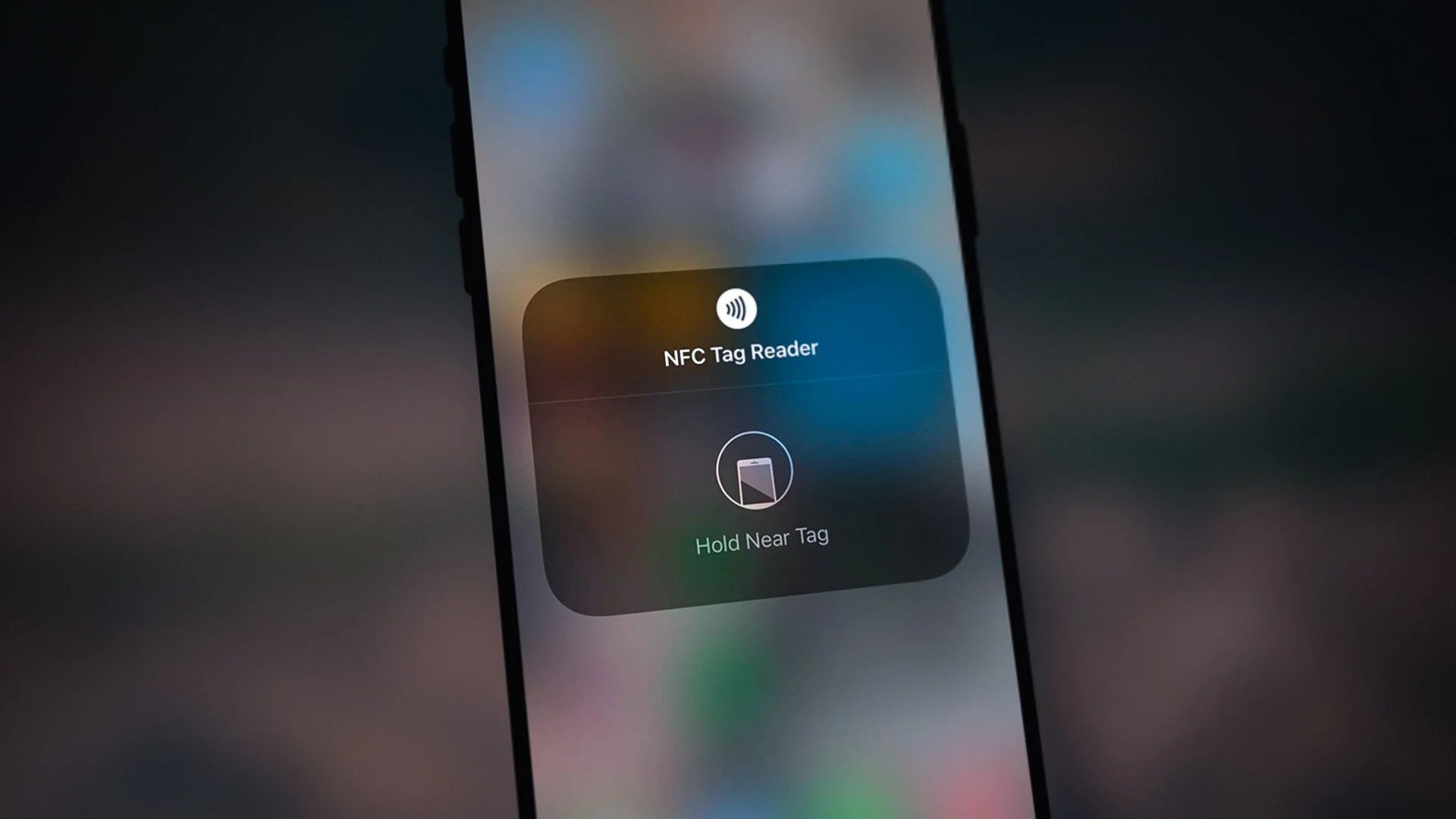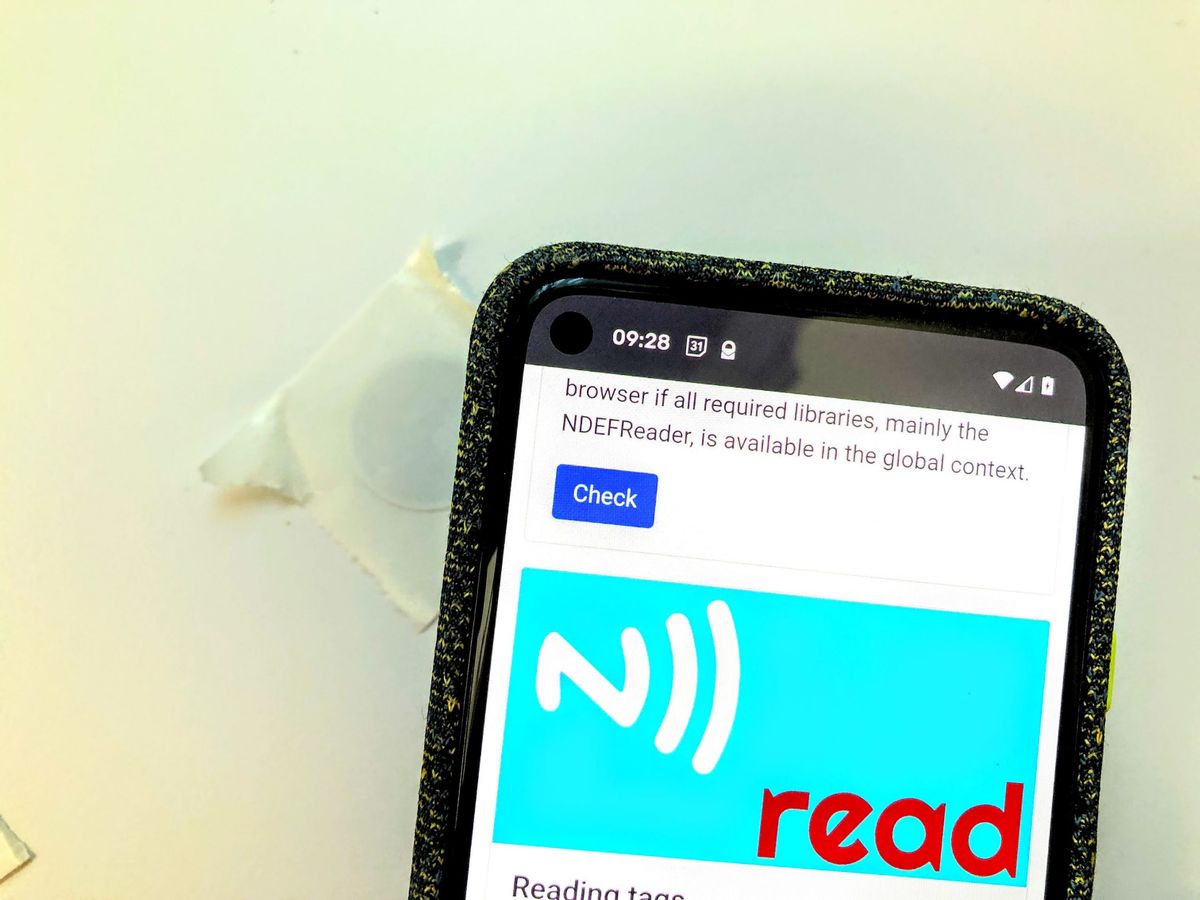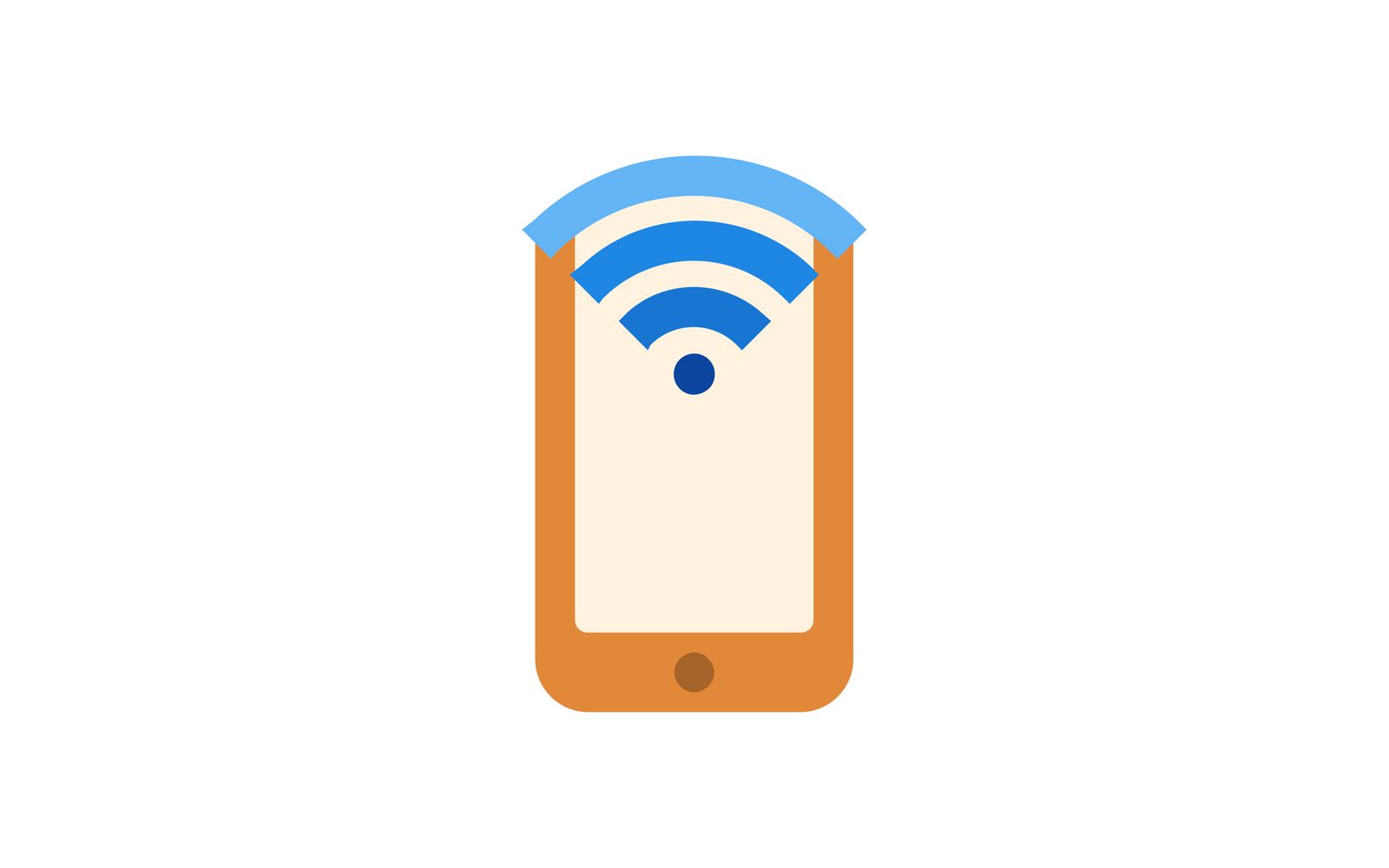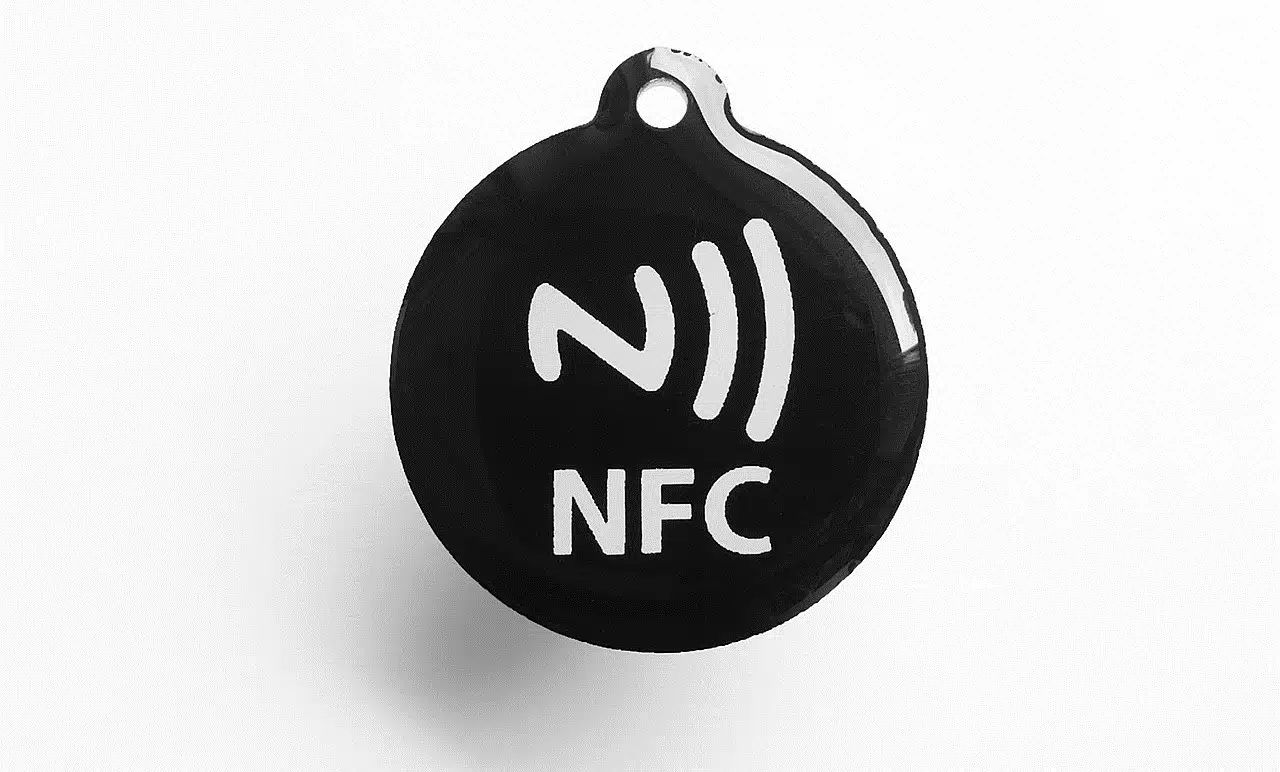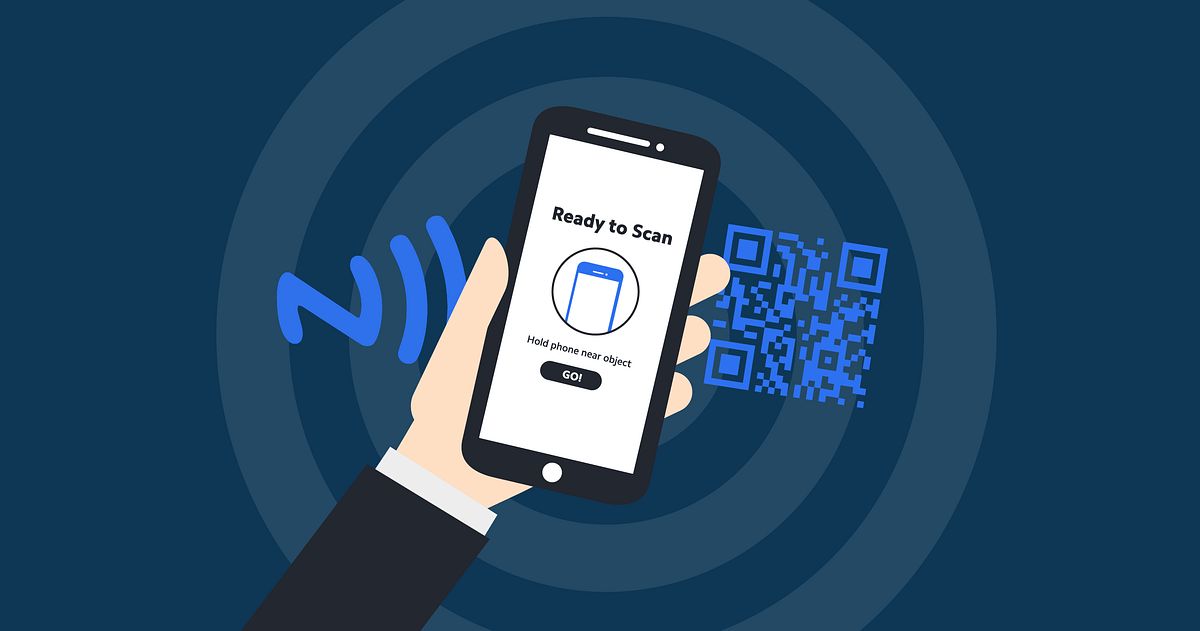Introduction
NFC (Near Field Communication) technology has revolutionized the way we interact with our devices and the world around us. Originally developed for contactless payment systems, NFC has expanded its capabilities to offer a wide range of applications, making it one of the most versatile technologies available today.
NFC tags are small, unpowered devices that can store and transmit information to NFC-enabled devices when they are in close proximity. These tags can be placed on various surfaces, such as posters, business cards, or even embedded in everyday objects like keychains or wristbands. With just a tap or a scan, NFC tags can trigger actions on your smartphone, tablet, or other compatible devices.
The beauty of NFC technology lies in its simplicity and convenience. Unlike other wireless technologies, such as Bluetooth or Wi-Fi, NFC doesn’t require pairing or complicated setup. It works seamlessly by just bringing two devices close together.
NFC tags have become increasingly popular due to their convenience and ease of use. They offer a myriad of possibilities for both individuals and businesses alike. Whether you want to automate tasks, share information, or enhance your marketing efforts, NFC tags can unlock a world of possibilities.
In this article, we will explore the basics of NFC tags, how to read and write them, and delve into the creative uses of NFC tags in various domains. From home automation to marketing, healthcare, and travel, we will discover the endless possibilities that NFC technology offers.
NFC Tag Basics
To understand the full potential of NFC tags, it’s important to grasp the basics of how they work. NFC tags are small, portable devices that contain an embedded chip and an antenna. These tags can be programmed to store and transmit information wirelessly to NFC-enabled devices.
NFC tags operate on the principle of electromagnetic induction. When an NFC-enabled device, such as a smartphone, comes into close proximity with an NFC tag (typically within a few centimeters), the two devices establish communication by generating a magnetic field.
There are different types of NFC tags available, including passive and active tags. Passive tags are the most commonly used ones and do not require an external power source. They leverage the electromagnetic field generated by the NFC-enabled device to power the chip and transmit data. Active tags, on the other hand, have an onboard power source, enabling them to have a longer range of communication.
NFC tags can store various types of data, such as URLs, contact information, text messages, or even commands to initiate specific actions on the device. The memory capacity of NFC tags can range from a few kilobytes to several megabytes.
NFC tags can be easily programmed or written by NFC-enabled devices. This allows users to customize the data stored on the tag based on their specific needs. For example, a business card NFC tag can be programmed to contain contact information, which can be easily shared with others by simply tapping their NFC-enabled devices.
Furthermore, NFC tags can also be read by NFC-enabled devices, allowing users to interact with the stored information or trigger predefined actions. For instance, scanning an NFC tag embedded in a movie poster could launch the movie’s trailer on your smartphone or provide you with offers and discounts for that particular movie.
In the next sections, we will explore how to read and write NFC tags, as well as dive into the myriad of creative uses that NFC tags offer. So, let’s harness the power of NFC technology and unlock its incredible potential!
Reading NFC Tags
Reading NFC tags is a simple process that allows you to access the information stored within them. Most modern smartphones and tablets come equipped with NFC technology, making it easy for users to interact with NFC tags using their devices.
To read an NFC tag, you first need to ensure that NFC is enabled on your device. This can usually be done through the settings menu of your device. Once NFC is enabled, you can place your device near the NFC tag, ensuring they are in close proximity, typically within a few centimeters.
When your device is near an NFC tag, it will automatically detect the tag and display a notification or prompt on the screen. By tapping the notification, you can access the information stored on the NFC tag. This information can vary depending on how the tag was programmed.
For example, if the NFC tag is embedded in a business card, tapping the notification will open the contact information stored on the tag. You can then save the contact details to your device’s address book with just a few taps. Similarly, if the NFC tag contains a URL, tapping the notification will open the associated website or landing page directly in your device’s web browser.
Reading NFC tags can also be used for more complex actions. For instance, if you have an NFC tag programmed to control your smart home devices, tapping the tag can automatically turn on lights, adjust the thermostat, or act as a security measure to lock or unlock doors.
One of the advantages of NFC technology is its speed and convenience. Reading an NFC tag is a quick and seamless process that does not require additional apps or settings. Simply bring your device close to the NFC tag, and the information will be at your fingertips.
In addition to smartphones and tablets, NFC tags can also be read by other NFC-enabled devices, such as smartwatches or payment terminals. This opens up additional possibilities for interacting with NFC tags in various scenarios.
Now that we understand how to read NFC tags, let’s explore how we can write or program these tags to suit our specific needs and unlock even more potential with NFC technology.
Writing NFC Tags
Writing or programming NFC tags allows you to customize the information stored on the tags and define the actions that will be triggered when they are tapped or scanned. This gives you the power to create personalized and interactive experiences for users.
To write an NFC tag, you will need an NFC-enabled device with the capability to write to NFC tags. Most modern smartphones and tablets have this capability, and there are also dedicated NFC tag writers available in the market. Once you have the necessary hardware, you can start the process of writing NFC tags.
First, determine the content that you want to store on the NFC tag. This can range from simple text or contact information to more advanced functionalities like launching specific apps, connecting to Wi-Fi networks, or initiating automated tasks.
Next, you will need an NFC tag writing app or software. There are several apps available for both Android and iOS devices that allow you to write and program NFC tags. These apps provide a user-friendly interface where you can input the desired information and define the actions associated with the tag.
Once you have the NFC writing app, open it on your device. Place the NFC tag near the device, typically within a few centimeters, and follow the instructions provided by the app. This may include entering text, URLs, or other information into designated fields and selecting the desired actions to be triggered when the tag is tapped or scanned.
After you have configured the NFC tag as per your requirements, tap the “Write” or “Save” button in the app. The app will then encode the information onto the NFC tag using the built-in NFC writer in your device. Once the writing process is complete, the tag is ready to be used.
It’s worth noting that some NFC tags can be locked to prevent further modifications, while others allow for reprogramming multiple times. This flexibility allows you to update the information on the tag whenever needed.
Writing NFC tags opens up a world of possibilities for customization and automation. Whether you want to create smart business cards, provide product information or instructions, share Wi-Fi credentials, or even set up location-based tasks, NFC technology empowers you to do so with ease.
Now that we have covered the basics of writing NFC tags, let’s explore the creative and innovative uses for NFC tags across various domains, from home automation to marketing, healthcare, travel, and more.
Creative Uses for NFC Tags
NFC tags offer limitless possibilities for creative and innovative applications. Let’s explore some of the exciting ways NFC tags are being used in different domains:
- Smart Home Automation: NFC tags can be placed around the house to automate various tasks. Tapping a tag near the entrance can turn on lights, arm the security system, and adjust the temperature. Tags near appliances can initiate specific actions, like brewing coffee or starting the washing machine.
- Interactive Art and Exhibitions: NFC tags placed alongside artwork or exhibits can provide visitors with additional information, audio or video guides, and even interactive experiences. Tapping a tag can trigger a specific audio narration or launch a related website for more in-depth exploration.
- Contactless Payments: NFC tags can be used for contactless payments, allowing customers to make purchases with a simple tap of their smartphones or smartwatches. This eliminates the need for physical cards or cash, making transactions faster and more convenient.
- Inventory Management: NFC tags can be utilized to track and manage inventory in businesses. Each item can have an NFC tag with relevant information, facilitating quick and accurate inventory counts, asset tracking, and product authentication.
- Medical and Healthcare: NFC tags can enhance patient care and safety. Medical professionals can access patient information, medication details, and treatment plans by tapping NFC tags on hospital wristbands or medical equipment. NFC tags can also remind patients to take medications at specific times or provide instructions for home care.
- Efficient Event Management: NFC tags can streamline event management processes. Attendees can simply tap their NFC-enabled devices on a tag at the entrance for easy check-ins, access to event information, and seamless networking opportunities. NFC tags can also be used for cashless transactions and interactive experiences throughout the event.
- Marketing and Advertising: NFC tags enable creative and interactive marketing campaigns. NFC tags on product displays or posters can provide product details, special offers, or allow users to instantly purchase the advertised item. NFC tags can also enable location-based marketing, triggering personalized promotions when customers tap their devices near tagged locations.
- Transportation and Travel: NFC tags facilitate efficient transportation and travel experiences. Integrated into transportation cards, NFC tags allow commuters to easily tap and pay for fare. In the travel industry, NFC tags can provide essential travel information, such as flight details, hotel reservations, and local attraction recommendations.
These are just a few examples of the creative ways NFC tags are being utilized. The versatility of NFC technology allows for endless possibilities in automating tasks, enhancing experiences, and simplifying everyday interactions.
Now that we have explored the creative uses of NFC tags, let’s dive into specific applications in different domains, starting with home automation.
Home Automation with NFC Tags
NFC tags are a game-changer when it comes to home automation. With just a tap of your smartphone or tablet on an NFC tag, you can effortlessly control various aspects of your home, creating a smart and convenient living environment.
Imagine arriving home after a long day and simply tapping an NFC tag near your front door to trigger a series of actions. The lights turn on, the thermostat adjusts to your preferred temperature, and your favorite music starts playing. All of this can be achieved with the power of NFC technology.
With strategically placed NFC tags throughout your home, you can create personalized experiences in each room. For example, by placing an NFC tag near your bed, you can program it to turn off all the lights, lower the volume on your TV, and set a sleep timer on your air conditioning unit, creating a relaxing environment for a good night’s sleep.
NFC tags can also simplify your morning routine. By placing a tag in your bathroom, you can program it to activate the shower at your desired temperature, turn on the coffee machine, and adjust the brightness and color temperature of your smart mirror. This ensures a seamless and efficient start to your day.
Beyond enhancing comfort and convenience, NFC tags can also improve home security. By placing a tag near your front door, you can activate your security system, lock all doors and windows, and receive a notification on your smartphone confirming that your home is secure.
The possibilities for home automation with NFC tags are endless. You can control your entertainment system, set up personalized lighting scenes, automate your kitchen appliances, and even integrate NFC tags with voice assistants like Amazon Alexa or Google Assistant for hands-free control.
Setting up NFC-powered home automation is relatively simple. You just need NFC-enabled devices, NFC tags, and a compatible app or software to program the tags. Many smart home platforms and devices support NFC integration, allowing you to easily connect and control various smart devices with a single tap.
With NFC technology, home automation has never been easier or more accessible. Embrace the power of NFC tags and turn your home into a smart sanctuary that enhances your lifestyle and simplifies your daily routines.
In the next section, we will explore how NFC tags are making a significant impact in the workplace, transforming business processes and improving productivity.
NFC Tags in the Workplace
NFC tags are revolutionizing the way we work, offering seamless connectivity and efficiency in the workplace. From streamlining access control to enhancing productivity, NFC technology is transforming traditional work processes.
One of the primary applications of NFC tags in the workplace is for access control and security. Placing NFC tags near entrance points allows employees to quickly and securely access office spaces by simply tapping their NFC-enabled identification cards or smartphones. This eliminates the need for physical keys or swipe cards, providing a convenient and efficient solution for employee access.
NFC tags can also be used for asset tracking and management within an organization. By attaching NFC tags to equipment or inventory, businesses can easily keep track of their assets, monitor their location, and streamline inventory management processes. This reduces manual effort, minimizes errors, and saves time, resulting in improved productivity.
In addition to access control and asset tracking, NFC tags can also be utilized to automate routine tasks in the workplace. For example, NFC tags placed near printers or copying machines can initiate printing or copying jobs when employees tap their devices. This can save time and eliminate the need for manual input, ensuring a smoother workflow.
NFC tags can also enhance collaboration and communication within teams. By placing NFC tags in meeting rooms or collaborative spaces, employees can easily share files, project updates, or contact information by tapping their devices on the tags. This fosters seamless information exchange and enhances teamwork.
Another way NFC tags are revolutionizing the workplace is by enabling contactless payments in office cafeterias or vending machines. Employees can make quick and secure transactions by tapping their NFC-enabled devices on the NFC tags placed on the payment terminals. This eliminates the need for cash or physical cards, providing a frictionless payment experience and reducing queues during busy hours.
Furthermore, NFC tags can simplify the onboarding process for new employees. By placing an NFC tag in the HR department, new hires can tap their devices to access essential documents, orientation materials, or training resources. This ensures a smooth and easy transition into their roles, saving time and effort for both employees and HR personnel.
The adoption of NFC tags in the workplace offers numerous benefits, including enhanced security, improved efficiency, streamlined processes, and simplified collaboration. As the technology continues to evolve, we can expect even more innovative applications and possibilities in the workplace of the future.
Next, we will explore how NFC tags are transforming marketing and advertising efforts, revolutionizing the way businesses engage with their customers.
NFC Tags for Marketing and Advertising
NFC tags have emerged as a game-changer in the world of marketing and advertising, offering interactive and personalized experiences that captivate customers and drive engagement. The versatility and convenience of NFC technology enable businesses to deliver targeted messages, gather valuable customer insights, and foster meaningful interactions.
One of the primary applications of NFC tags in marketing and advertising is product information and engagement. By placing NFC tags on product displays or packaging, businesses can provide customers with detailed information, specifications, or user reviews with a simple tap of their devices. This enhances the shopping experience, empowers customers to make informed decisions, and boosts customer satisfaction.
NFC tags also enable businesses to offer exclusive deals, discounts, and loyalty rewards. By tapping an NFC tag, customers can access personalized offers, participate in loyalty programs, or redeem coupons, creating a sense of exclusivity and value. This drives customer loyalty, encourages repeat purchases, and increases brand engagement.
Furthermore, NFC tags can be used for location-based marketing, triggering relevant content or offers when customers tap their devices near NFC-tagged locations. For instance, a user walking past a restaurant with an NFC-tagged poster can tap their device to receive a customized menu, special promotions, or even make a reservation. This hyper-targeted approach amplifies the effectiveness of marketing campaigns, ensuring that messages reach the right audience at the right place and time.
NFC technology can also be leveraged for interactive advertising experiences. For example, by embedding NFC tags in print advertisements, customers can tap their devices to watch product videos, access additional content, or initiate actions like requesting a quote or booking a test drive. This level of engagement creates memorable experiences and drives higher customer involvement.
In addition to customer-facing marketing efforts, NFC tags also offer benefits for businesses in terms of gathering valuable customer data and insights. When customers tap NFC tags, businesses can collect information like contact details, preferences, or usage behavior. This data can be used for targeted marketing campaigns, improving customer segmentation, and refining business strategies to meet customer needs effectively.
The adoption of NFC tags in marketing and advertising fosters stronger customer relationships, increases brand visibility, and generates measurable ROI. By harnessing the power of NFC technology, businesses can create impactful marketing experiences that resonate with customers and leave a lasting impression.
In the next section, we will explore how NFC tags are transforming the healthcare industry, revolutionizing patient care and improving healthcare processes.
NFC Tags in Healthcare
NFC technology is making waves in the healthcare industry, revolutionizing patient care, improving processes, and enhancing the overall healthcare experience. By leveraging the power of NFC tags, healthcare providers can streamline operations, enhance patient safety, and deliver personalized care efficiently.
One of the primary applications of NFC tags in healthcare is patient identification and access control. NFC-enabled wristbands or ID cards can be used to quickly identify patients, ensuring accurate medication administration, tracking patient movement, and enhancing overall safety within healthcare facilities. By simply tapping a device near an NFC tag, healthcare professionals can access patient information, medical history, and treatment plans with ease.
NFC tags also play a vital role in medication management. By attaching NFC tags to medication containers or blister packs, patients can tap their devices to receive reminders for medication schedules, dosage instructions, or even access educational materials related to their medications. This helps improve medication adherence and enables patients to take control of their health.
In addition to medication management, NFC tags can be used to automate routine tasks in healthcare settings. For instance, tapping an NFC tag near medical equipment can prompt automated maintenance checks, calibration activities, or even notify staff for equipment replenishment. This reduces manual effort, enhances operational efficiency, and ensures the availability of critical resources when needed.
NFC tags also facilitate seamless communication and collaboration between healthcare providers. Placing NFC tags in office spaces or on meeting room doors allows staff to tap their devices to access essential documents, schedules, or patient information, fostering efficient teamwork and ensuring effective information exchange.
Another significant application of NFC tags in healthcare is in patient monitoring and remote care. By integrating NFC tags with wearable devices or medical sensors, patients can capture and transmit vital signs, glucose levels, or other health metrics to healthcare providers. This enables remote monitoring, timely intervention, and proactive care management, particularly for patients with chronic conditions.
The adoption of NFC tags in healthcare brings numerous benefits, such as improved patient safety, streamlined operations, enhanced communication, and personalized care. As the technology continues to evolve, we can expect even more innovative applications that will transform the way healthcare is delivered.
Next, we will explore how NFC tags are revolutionizing travel and transportation experiences, providing convenience and efficiency for both travelers and service providers.
NFC Tags for Travel and Transportation
NFC tags are powering a revolution in the travel and transportation industry, providing convenience, efficiency, and enhanced experiences for both travelers and service providers. From seamless access to personalized information, NFC technology is transforming the way people travel and navigate transportation systems.
One of the primary applications of NFC tags in travel and transportation is ticketing and access control. NFC-enabled smart cards or mobile devices can be used as electronic tickets, allowing travelers to simply tap their devices at ticket barriers or turnstiles for seamless entry to airports, train stations, or bus terminals. This eliminates the need for physical tickets or cards, streamlining the boarding process and reducing queue times.
NFC tags also facilitate convenient and cashless payments for transportation services. By tapping NFC-enabled devices on NFC-powered payment terminals, travelers can easily pay for fares, parking fees, or even access additional services like bike-sharing or car rentals. This frictionless payment experience enhances the overall travel experience and reduces the need for carrying physical cash or cards.
Beyond ticketing and payments, NFC tags can also provide travelers with valuable information and personalized experiences. Placing NFC tags at strategic locations or points of interest can deliver real-time updates, navigation assistance, or even audio guides to enhance the travel experience. Travelers can tap their devices on NFC tags to access relevant information, such as flight details, train schedules, local attractions, or recommended dining options.
NFC tags are also instrumental in providing efficient luggage tracking and management. By attaching NFC tags to luggage or travel bags, travelers can tap their devices to receive real-time updates on their baggage status, ensuring peace of mind and minimizing the risk of lost or mishandled luggage.
NFC technology also helps in creating personalized travel experiences. For instance, tapping an NFC tag at a hotel check-in counter can provide guests with a personalized welcome message, room access details, and customized services based on their preferences. This level of personalization enhances customer satisfaction and creates memorable travel experiences.
The adoption of NFC tags in travel and transportation brings a host of benefits, including improved efficiency, enhanced customer experience, simplified payments, and seamless navigation. As NFC technology continues to advance, we can anticipate even more innovative applications that will transform the way we travel.
Now that we have explored the wide-ranging applications of NFC tags, let’s reflect on the endless possibilities and the immense impact this technology has across various domains.
Conclusion
NFC technology has revolutionized the way we interact with the world around us. NFC tags, with their ability to store and transmit information wirelessly, offer endless possibilities across various domains. From home automation to healthcare, marketing, and travel, NFC tags have paved the way for more convenient, personalized, and efficient experiences.
In this article, we explored the basics of NFC tags, how to read and write them, and discovered their creative uses. NFC tags have become invaluable in home automation, providing enhanced comfort and convenience. They have transformed the workplace, streamlining access control, and improving productivity. In marketing and advertising, NFC tags allow for interactive campaigns, targeted messaging, and valuable customer insights. For healthcare professionals, NFC tags have simplified patient identification and medication management, enabling better care delivery. In the travel and transportation industry, NFC tags have improved ticketing, payments, and personalized experiences for travelers.
The adoption of NFC tags continues to grow, as businesses and consumers recognize the immense benefits they bring. Whether it’s simplifying tasks, enhancing security, delivering personalized experiences, or improving efficiency, NFC tags are driving innovation and shaping the way we live, work, and interact with technology.
As NFC technology advances and becomes more integrated into our everyday lives, we can expect even more exciting applications and possibilities to emerge. From smart homes to smart cities, NFC tags will continue to play a significant role in transforming our interactions with the digital and physical world.
So, let’s embrace the power of NFC technology and explore the boundless opportunities it offers. Whether it’s automating our homes, enhancing business processes, or providing seamless travel experiences, NFC tags will continue to shape the future of connectivity and convenience.










